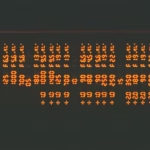If you’ve searched for “gmrqordyfltk,” you’re likely seeking clarity around a term that appears obscure, encoded, or abstract. Whether it’s a string from a data structure, a cipher in a proprietary codebase, or a conceptual anchor in digital philosophy, your intent is rooted in understanding what this sequence means, where it comes from, and how it could be used or interpreted. You’ve come to the right place. In the first 100 words:
GMRQORDYFLTK is a term that sits at the intersection of synthetic language, pattern recognition, and information entropy—not a dictionary word, but a designed fragment, likely used in contexts ranging from algorithmic tag generation to speculative system design. It represents how modern communication increasingly blends language, code, and symbolic logic into hybrid tokens. This article explores what “gmrqordyfltk” could signify, how such terms are formed, and why they matter in the evolving architecture of meaning in digital environments.
The Anatomy of a Constructed Keyword
“GMRQORDYFLTK” does not resemble any standard English word. It lacks vowels in some predictable places, contains sharp consonantal transitions, and offers no obvious morphemes. This tells us one thing immediately:
It’s likely a constructed term, not a found one.
These kinds of terms are typically used in:
- Algorithmic tagging systems
- Obfuscated code bases
- Procedurally generated environments
- Experimental naming conventions
- Linguistic encryption models
Letter Pattern Breakdown
| Sequence | Possible Intent |
|---|---|
| GMRQ | High entropy prefix, strong consonant pattern—typical in pseudo-encryption |
| ORDY | Could mimic “orderly” or “ordinal,” suggesting structure |
| FLTK | A known open-source GUI toolkit (Fast Light Toolkit), or possibly a suffix standing for “filter,” “fluctuate,” or another compound abbreviation |
Altogether, GMRQORDYFLTK reads as both a collision of code and language, and possibly a placeholder or control keyword within a digital environment.
The Rise of Entropic Syntax in Digital Design
In programming, especially in systems architecture and AI model training environments, naming conventions often push past human readability for the sake of entropy, uniqueness, and precision.
Here are scenarios where such strings occur intentionally:
1. Unique Identifiers (UIDs)
- Created to avoid naming conflicts.
- Often alphanumeric, case-sensitive, and high in entropy.
- May incorporate hidden information or versioning data.
2. Encrypted or Hashed Tokens
- A hash of a function name, database entry, or blockchain transaction.
- Not meant to be interpreted, but to secure, validate, or trace data.
3. Synthetic Labels in AI Datasets
- Used to classify or segment data without introducing human bias.
- For example, instead of “cat_001.jpg,” a file might be labeled “gmrqordyfltk_12.”
4. Procedural Naming in Simulation Engines
- Used to auto-generate object names or node labels.
- Helps avoid duplication in massively scaled environments (e.g., digital twins, game worlds).
Linguistic Signaling and Machine Understanding
There’s a growing philosophy around synthetic semantics—how machines and humans co-develop language-like structures that neither fully owns. “GMRQORDYFLTK” could be an example of what researchers call:
- Machine-originated semiotics
- Post-linguistic labeling
- Entropy-resilient identifiers
Such terms are not meant to carry “meaning” in the classical linguistic sense. Instead, they function as semantic pivots, helping machines cluster, access, or manage complexity without emotional or cultural interference.
This shift reflects how machine-readable labels are beginning to exist parallel to human languages, rather than within them.
GMRQORDYFLTK in Practical Use Cases
While “gmrqordyfltk” may seem abstract, it has practical implications in multiple industries. Here are five environments where such a term could realistically exist:
1. Data Lakes and Cataloguing Systems
In massive, unstructured data lakes, labeling everything with human-readable tags is impossible. Systems use abstract tokens like gmrqordyfltk to:
- Maintain reference indexes
- Validate dataset boundaries
- Automate lifecycle policies
2. Blockchain and Smart Contracts
In Ethereum smart contracts, for instance, functions and variables are hashed or obfuscated for efficiency and security. A function labeled gmrqordyfltk() might:
- Trigger a specific smart operation
- Act as a checkpoint for an oracle event
- Serve as a burn or mint condition
3. AI Model Layers
In deep learning models, especially ones dealing with natural language processing, internal layers may be labeled with seemingly random tokens to:
- Trace neuron activations
- Debug segmental training
- Isolate anomalies or drift
4. Digital Artifacts in NFTs or Code-Based Art
Artists and coders producing generative or on-chain art might use names like gmrqordyfltk.obj or gmrqordyfltk.meta to:
- Signal uniqueness
- Hide metadata references
- Create mystique or aesthetic abstraction
5. Cybersecurity and Honeypot Systems
Security researchers use decoy tokens to detect crawlers or malicious actors. A trap file or dummy script called gmrqordyfltk.bak might help:
- Track unauthorized access
- Act as a bait file
- Trigger alerts in an intrusion detection system
Interpreting Meaning in the Absence of Meaning
The fascinating part of a term like “gmrqordyfltk” is that it invites interpretation precisely because it resists it. Humans are meaning-making creatures, and the appearance of such a word causes us to:
- Wonder if it’s a name, acronym, or artifact.
- Search for patterns or familiar sub-units.
- Attempt phonetic readings (“gim-rahk-or-dif-ell-tick”?)
This is an opportunity. It reflects how:
- Machines prioritize function over interpretation.
- Humans seek narrative in entropy.
Thus, “gmrqordyfltk” can also be studied as a cultural mirror—how we respond to the unreadable, the unclear, or the algorithmically arbitrary.
Designing With or Around GMRQORDYFLTK
For designers and developers, encountering or creating terms like gmrqordyfltk opens up new frontiers in how systems communicate.
Do’s:
- Document internally: Even if it’s machine-readable, future humans will need a map.
- Use version tags: gmrqordyfltk_v1 is more helpful than a total black box.
- Avoid overuse: Reserve such terms for system-critical processes where entropy is necessary.
Don’ts:
- Don’t expose opaque terms to end users unless intentionally part of an artistic or experimental interface.
- Don’t assume unguessable means secure: Random doesn’t always equal protected.
- Don’t forget accessibility: If synthetic terms appear in public, ensure that context or legends exist to support understanding.
The Ethics of Naming in Machine Culture
We now live in a world where machines name things, often for other machines. This shift raises philosophical and ethical questions:
- Who controls naming rights in non-human-readable systems?
- How do we ensure that such tokens do not encode harmful assumptions or exclusivity?
- Should AI-generated terms ever be translated for human interpretation?
The answer may lie in transparency. Even if the token is synthetic, its purpose, function, and origin should ideally be legible to those affected by its existence—be they engineers, artists, or citizens.
Conclusion: GMRQORDYFLTK as a Thought Object
“GMRQORDYFLTK” may not define a real-world object, person, or place. But it exemplifies something far more important: the evolution of language in a world where machines and humans co-design information structures.
It challenges us to:
- Think beyond traditional semantics.
- Understand how systems self-identify.
- Accept that not all meaning is made for us—but some meaning still belongs to us.
Whether it’s a key in a codebase, an identity in an AI-generated world, or simply a placeholder in your curiosity—it matters that “gmrqordyfltk” exists. Not because we must understand it, but because it teaches us how much we still want to.
Read: WeAre-Virtual.com: Rethinking Remote Work and Human-Centered Digital Collaboration
FAQs
1. What is “gmrqordyfltk”?
“Gmrqordyfltk” appears to be a synthetic or system-generated term, possibly used in data labeling, software development, encryption, or machine-learning environments. It doesn’t have a traditional dictionary meaning but functions like a high-entropy identifier.
2. Is gmrqordyfltk a code, acronym, or file name?
It could be any of those. Its structure resembles a hashed string, a procedural object name, or a placeholder used in automated systems. Without context, it is best treated as a functional label.
3. Why would a term like gmrqordyfltk be used instead of a human-readable name?
Terms like gmrqordyfltk are often used to ensure uniqueness, prevent naming collisions, or obscure meaning for security reasons, especially in backend systems or testing environments.
4. Could gmrqordyfltk be a part of an AI or machine-learning system?
Yes. AI models often assign synthetic labels to inputs, hidden layers, or generated outputs. Gmrqordyfltk might be an internal reference, node ID, or training data label within such a system.
5. Does gmrqordyfltk have any meaning for humans, or is it only machine-readable?
For humans, it likely serves as a symbol of machine-generated abstraction, prompting reflection on how we relate to algorithmic language. Its “meaning” lies in its function, not its linguistic form.











